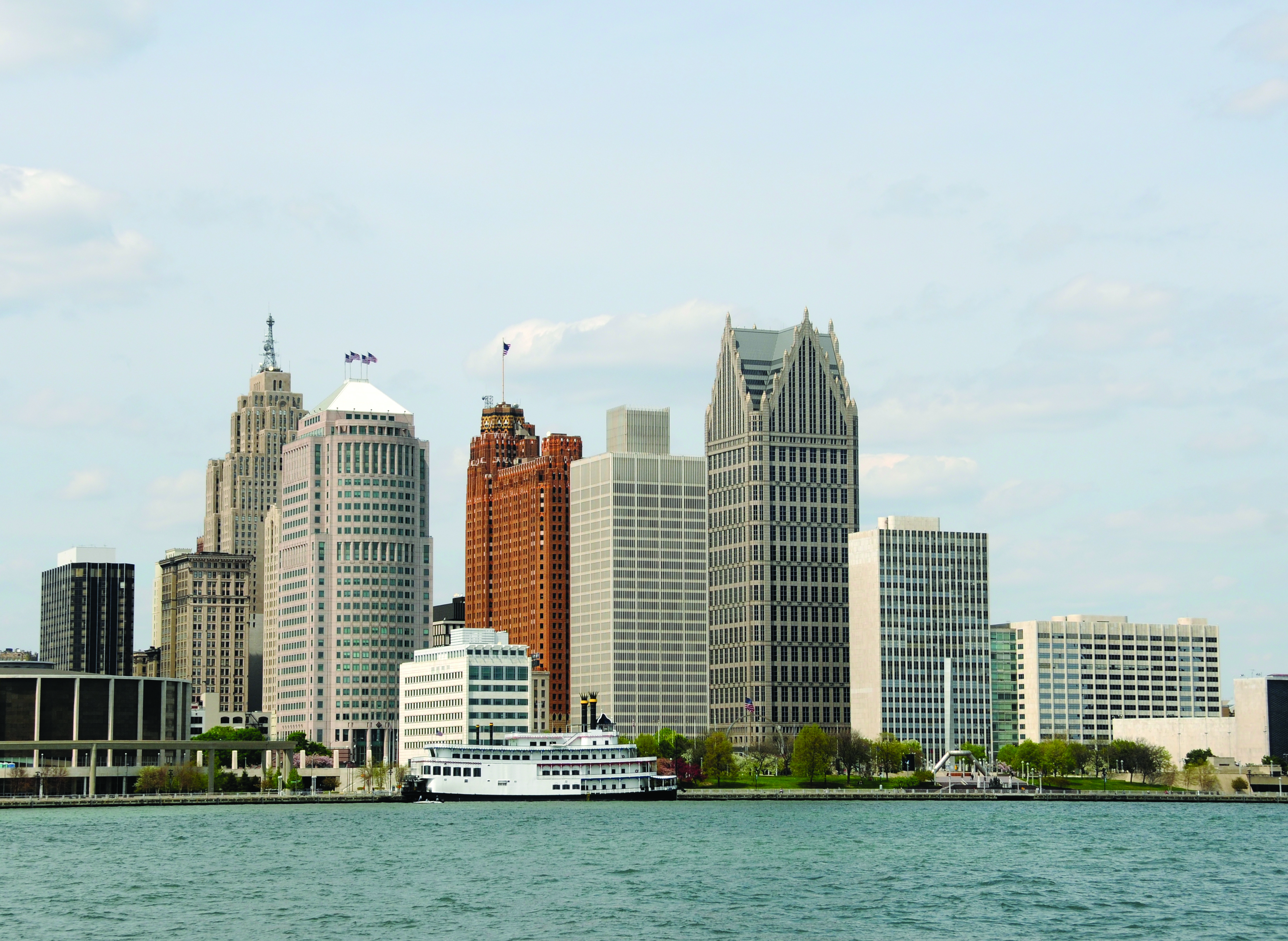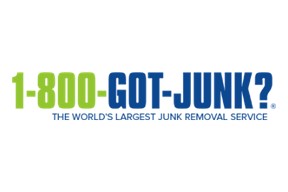Detroit has flipped the switch on a plan to light up the streets at night and is now attracting the attention of investors who see bargain basement prices and a whole lot of potential.
The once-bankrupt city just completed a four-year project to replace “all” the city’s streetlights. 88,000 mostly broken down old sodium lights were replaced with 65,000 brighter energy-efficient LED lights across the city.
The street light replacement project was part of the city’s bankruptcy exit plan. The judge allowed the city to eliminate $7 billion in debt. In return, the city agreed to invest $1.7 billion into improvements. The new lights were part of those improvements.
This is a big part of what appears to be a turnaround story for a city that has seen much better days. It became the heart of the auto industry starting with the Ford Motor Company in 1903. Other car companies followed suit, including Dodge, Chrysler and Packard.
In the Beginning: ‘Auto Central’
The car companies created hundreds of thousands of new jobs and attracted a mass migration of people from other parts of the country and Europe. The city became known as Motor City, or Motown. It grew to be the fourth largest city in 1920 behind New York City, Chicago and Philadelphia. When the population peaked at about 1.8 million people in 1950, it slipped to 5th place, as Los Angeles grew and took fourth place, but the city was still thriving.
As the auto industry boomed, the city also felt the effects of major demographic changes that have caused problems. There were huge contingents of Southerners, both black and white, all competing with Detroit natives for jobs. Racial tensions grew, and the city became a stronghold for the KKK and a few notorious race riots.
As an antidote to those tensions, people began migrating to the suburbs. The car culture also made it easier to live outside the city. But as the Detroit population dwindled, so did the city’s tax base.
The gas crisis of the 1970s also took a toll on the city’s bottom line. Americans started buying more fuel-efficient foreign cars, which cut into U.S. auto sales. That led to factory closures and layoffs in Detroit.
Auto Industry Woes’ Ripple Effect
Thousands of small businesses that relied on the prosperity of the auto industry also folded. The city was in trouble as tax revenue eroded even further and people moved away.
The decline in population was huge. According to the Census Bureau, Detroit’s population went from 1.8 million at its peak in 1950 to about 700,000 in 2010—a 60 percent drop!
The city first began its redevelopment efforts around the year 2000. But the Great Recession came along in 2008, causing more financial upheaval. During the midst of the recovery, the mayor and other city employees were convicted for crimes of corruption that cost the city millions of dollars.
That was apparently the last financial straw for Detroit. The city found itself in a major financial crisis and the state of Michigan took control. Months later, Detroit became the largest U.S. city to file for bankruptcy.
With $18.5 billion in debt and thousands of creditors, it took 18 months to come up with an exit plan. The city agreed to $1.7 billion on improvements as part of that plan.
Finally, a Bright Spot for Struggling City
And this is where the story of the streetlights began. It’s considered one of the brightest moments in recent Detroit history. Before the project began, an estimated 40 percent of the city’s 88,000 streetlights did “not” work. Vandals had stripped many of those old lights for their copper wires. With streets shrouded in darkness, people were afraid to go out at night.
The new streetlight system has fewer lights but they are brighter. They also have aluminum wiring instead of copper, making them less desirable for vandals. And they are also 100 percent LED, making them cheaper to operate. The city is saving about $3 million a years on electricity because of those LED lights.
This is only one big step in the city’s new path to prosperity. In a Detroit News article from January 2017, the paper says there were at least 110 development deals unveiled the previous year. That includes 32 new restaurants and bars in the greater downtown area. Those deals stretch across 7.2 square miles of the city and represent hundreds of millions of dollars in investment.
The president and CEO of the Detroit Economic Growth Corporation, Roderick Miller, told the paper: “We are starting to run on all cylinders.” He says: “Office vacancy is low, rents continue to climb, housing demand remains strong even as more units come online.”
Big-Name Backers On Board
Quicken Loans CEO and billionaire Dan Gilbert is one of two billionaires committed to the city’s rebirth. In 2010, he moved his company and its 1,700 workers from the suburbs to the downtown area. During the years that followed, the paper says his investment firm has invested more than $2 billion in downtown properties.
Little Caesars Pizza chain owner Mike Ilitch, who died this week at age 87, also had committed to the city’s revitalization in a major way. The Detroit News reported that the Ilitch family also committed to investing $2 billion to support dozens of projects in the Midtown area, near the new Little Caesar’s Arena. Ilitch owned the Detroit Red Wings and Detroit Tigers and bought the naming rights for the new arena, which is set to open this fall.
The new stadium is not the only big improvement in Midtown. At least 10 projects were completed last year, adding at least 645 new residential units and another 20,000 square feet of commercial space to Midtown. 10 new projects are reportedly underway.
Redevelopment projects are happening in other parts of the city as well, including North Corktown, a northwest corridor called Livernois-McNichols, a section called the Villages, and Mexicantown in the southwest.
Sometime this spring, the new Qline streetcar will begin operating. It will run 3.3 miles, connecting the downtown area with New Center.
Millennials are a big part of this new wave of activity in Detroit. As prices rise faster than wages in other parts of the country, Detroit is very affordable.
According to Zillow, the median home value was $37,600 in December of last year. But don’t jump on Zillow to buy the cheapest property in Detroit! Some neighborhoods are still experiencing high crime and would not be wise investments at this time. It’s vitally important to pick the right neighborhoods, where your tenants would be safe—in areas that are directly in the path of progress.
Home Prices are Rebounding
Low prices in Detroit won’t last forever. Data collection firm CoreLogic says they are rising faster than the national average. It says they rose 9.3 percent in 2016. The national average was 7 percent. The firm expects to see another 4.7 percent increase in home prices by December 2017.
Detroit has another new feather in its cap. It made #89 on U.S. News & World Report’s list of “100 Best Places to Live”—partially due to those super-low home prices. It’s not a super-high score, but it shows that Detroit is becoming more desirable.
U.S. News and World Report writes: “Detroit currently sits on the edge of a renaissance.” It says: “Small businesses are once again setting up shop in the area, and new restaurants are luring suburbanites back to Motown.”
All this makes for a prime opportunity for investors to get in on the ground floor of this big-city revival. But it’s also important to understand which neighborhoods are truly in redevelopment. You can get that data, along with a list of professionals— recommended by our network of over 28,000 investors—who can help you find savvy investments in the hottest up-and-coming neighborhoods of Detroit. Simply visit www.NewsforInvestors.com.
About the Author
Kathy Fettke is the founder and co-CEO of Real Wealth Network, a passive real estate investing club with more than 24,000 members. She’s also the author of “Retire Rich with Rentals” and host of “The Real Wealth Show,” a featured podcast on iTunes with listeners in 27 different countries. Kathy is passionate about understanding real estate cycles so she and her members can invest in the best markets and best deals available today. She is frequently invited to share her expertise on CNN, CNBC, Fox News, NPR, CBS MarketWatch and in the Wall Street Journal. Kathy received her BA in Broadcast Communications from San Francisco State University and worked in the newsrooms of CNN, FOX, CTV and ABC-7. She’s past-president of American Women in Radio & Television. Kathy loves the freedom that real estate investing can bring. She lives in Malibu, California, with her husband and two daughters and enjoys traveling, hiking, rock climbing, skiing, figure skating and surfing. Contact her at kathy@realwealthnetwork.com.
























0 Comments